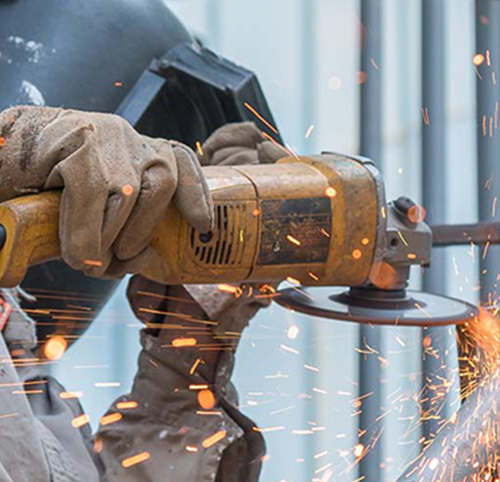Hot-Rolled Steel Pipes: Why They Matter in Piping Solutions?

Hot-Rolled Steel Pipes: Why They Matter in Piping Solutions?
Understanding Hot-Rolled Steel Pipes
Hot-rolled steel pipes are manufactured by rolling steel at high temperatures—typically above the recrystallization temperature (often over 1,700°F ≈ 926°C). This process allows the steel to be shaped into pipes while still ductile, enabling larger deformations with less risk of fissures or cracking. The hot-rolling method contrasts with cold-rolling or cold-forming, which are performed at or near ambient temperatures and typically produce tighter tolerances and smoother finishes.
Key Material Properties and Performance Advantages
-
Strength & Toughness
Because hot rolling involves shaping at elevated temperatures, steel can maintain or develop desirable internal crystal structures. This contributes to high tensile strength, good impact resistance, and toughness. For example, mild steel pipes manufactured via hot rolling often exhibit tensile strengths in the range of 250-500 MPa, with yield strength values (depending on thickness, grade, and processing) that are useful for applications involving mechanical loads.
-
Ductility and Shape Versatility
Hot-rolled pipes tend to be more ductile than their cold-formed counterparts. They can tolerate deformation more readily without cracking. This makes them well suited for applications needing larger diameters, thicker walls, or custom shapes. Welded and seamless hot-rolled pipes can be produced in many diameters and wall thickness combinations.
-
Cost-Effectiveness
Having fewer processing steps than cold rolling (no need for intermediate cooling and reheat for shaping, less finishing) tends to reduce cost. Hot rolling uses less energy compared to multiple passes in cold forming. For many industrial or infrastructure projects where surface finish or tight dimensional tolerances are not the highest priority, hot-rolled steel pipes present excellent value.
-
Durability & Environmental Resistance
Properly made hot-rolled steel pipes, especially when paired with protective coatings (like galvanizing, epoxy, or paint) or corrosion‐resistant alloys, can withstand demanding service conditions: elevated temperatures, mechanical stress, etc. While raw hot-rolled surfaces are rougher and may oxidize more readily than cold-rolled steel, protective treatment helps ensure long service life.
-
Weldability and Joining
Hot-rolled pipes, especially those made from mild or carbon steel with a moderate carbon content, are generally easier to weld. The thermal structure of the metal after hot rolling simplifies many welding processes, reduces the risk of cracking, and makes fabrication more straightforward.
Common Applications Where Hot-Rolled Steel Pipes Excel
- Construction & Structural Support: Beams, columns, scaffolding, building frames, foundation piles, where strength and load-bearing matter more than perfect surface finish.
- Water, Gas & Oil Transportation: Especially when pressure ratings are moderate to high, and under conditions where pipes are buried or concealed, so surface finish is less visible, but durability and strength are essential.
- Industrial & Mechanical Equipment: Components in machinery, pressure vessels, structural shells, and in applications requiring heat exchange or exposure to elevated temperatures.
- Infrastructure & Heavy Projects: Bridges, outdoor structures, energy generation, support frameworks, transmission systems, etc.
Limitations & Technical Considerations
While hot-rolled steel pipes offer many advantages, some trade-offs must be considered:
- Dimensional Tolerances: Hot rolling may produce pipes with looser tolerances in terms of diameter, wall thickness, and geometry compared to cold-rolled or precision-formed pipes. For applications needing tight fits, high accuracy, or smooth interiors/exteriors, further machining or finishing may be required.
- Surface Finish & Scale: The surface often has mill scale or roughness, and may require cleaning/coating for applications exposed or where aesthetics or fluid smoothness inside the pipe is important.
- Weight & Handling: Because of higher thicknesses and heavier material, handling, transportation, and installation require greater care and cost.
- Corrosion Without Protection: Untreated hot-rolled steel is more susceptible to rust and environmental degradation. Coatings, galvanizing, or use of alloyed steels address this, but add cost.
Data & Standards – What to Watch For
When specifying hot-rolled steel pipes, important technical metrics include:
- Tensile Strength & Yield Strength: Depending on grade, pipe thickness, and treatment.
- Elongation / Toughness: Particularly in colder climates or dynamic load situations.
- Compliance with Standards: ASTM, IS, EN etc. e.g. ASTM A53 includes types of steel pipe produced by hot working or seamless forming.
- Corrosion Resistance: Either inherent (via appropriate alloy) or via coatings.
- Dimensional Tolerance & Wall Thickness Uniformity: Critical for pressure systems or fluid flow calculations.
Why Hot-Rolled Steel Pipes Matter in Modern Piping Solutions?
Because of their mix of strength, cost-effectiveness, adaptability, and long‐term durability, hot-rolled steel pipes are central to many large-scale infrastructure, industrial, and energy projects. They offer reliable performance under high stress, abrasion, temperature fluctuations, and demanding environmental conditions. In many cases, the incremental cost of finishing or protective treatment is justified by the extended service life and lower maintenance. With growing emphasis on sustainability, the recyclability of steel and the possibility of using steel grades that minimize corrosion (thus reducing replacements) further enhance their appeal.
Conclusion: Pinax Steel’s Commitment
At Pinax Steel, we recognize that in the field of piping solutions, quality isn’t optional—it’s essential. Our hot-rolled steel pipes are engineered to meet exacting international standards, balancing high tensile strength, ductility, and weldability so that they perform reliably under heavy load, high pressure, and prolonged usage.
Beyond just supplying pipes, we ensure they are treated or finished appropriately for corrosion protection, dimensional accuracy, and consistency, so that our clients—whether in infrastructure, petrochemical, water supply, or industrial sectors—get value not just at installation, but over the full operational life cycle. With Pinax Steel, you gain a partner committed to precision, robustness, and dependable service, because your projects deserve nothing less.
Additional Reading:

